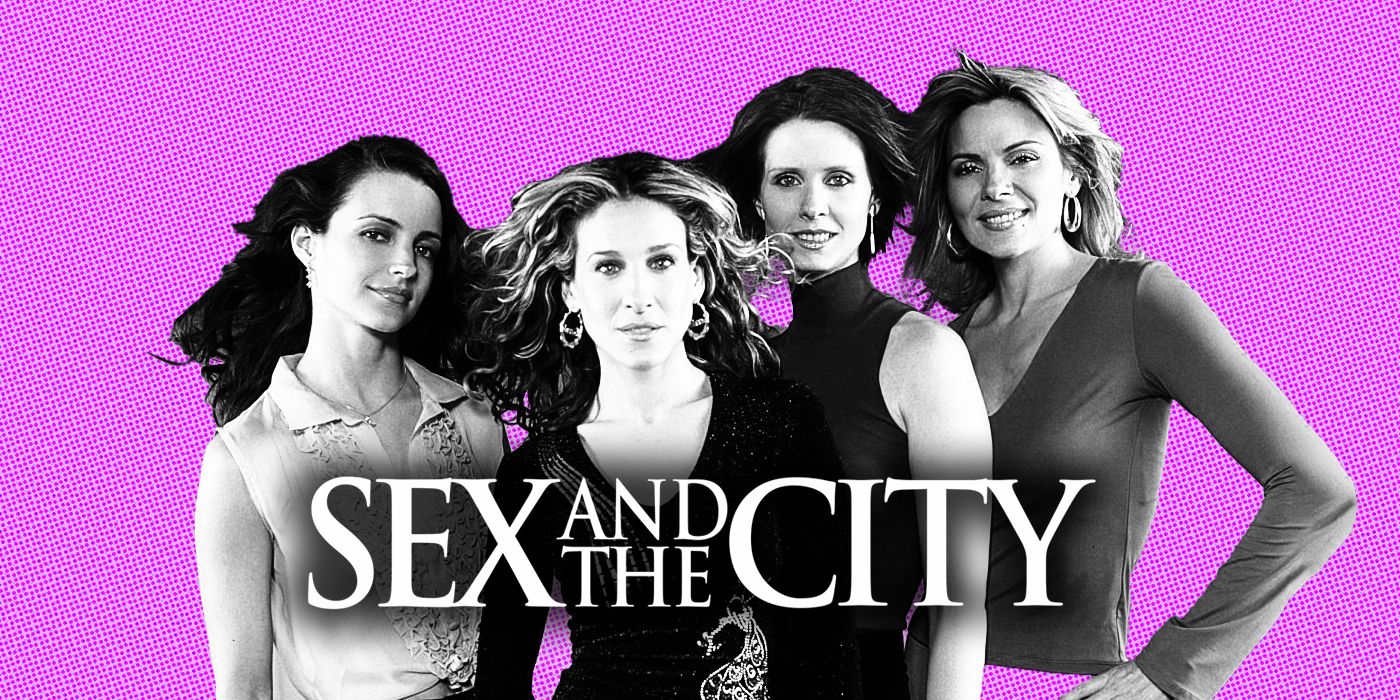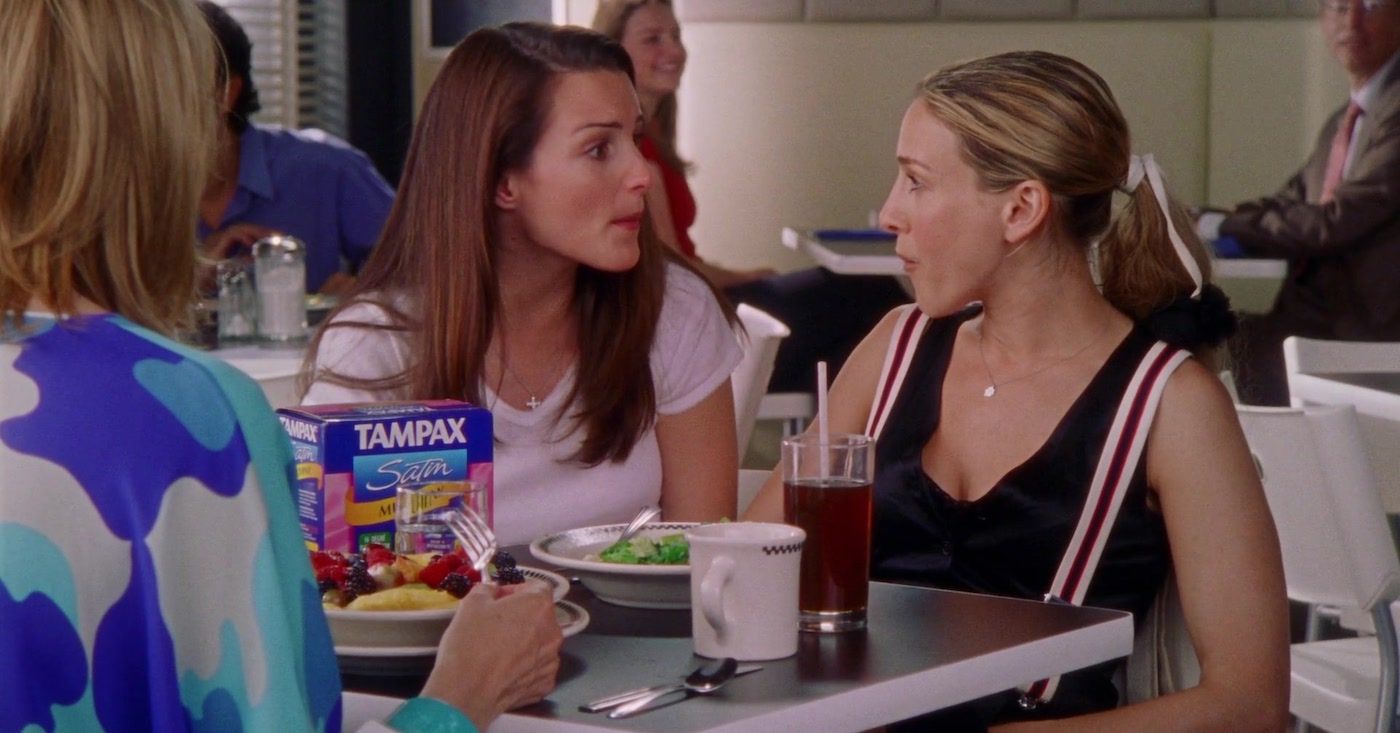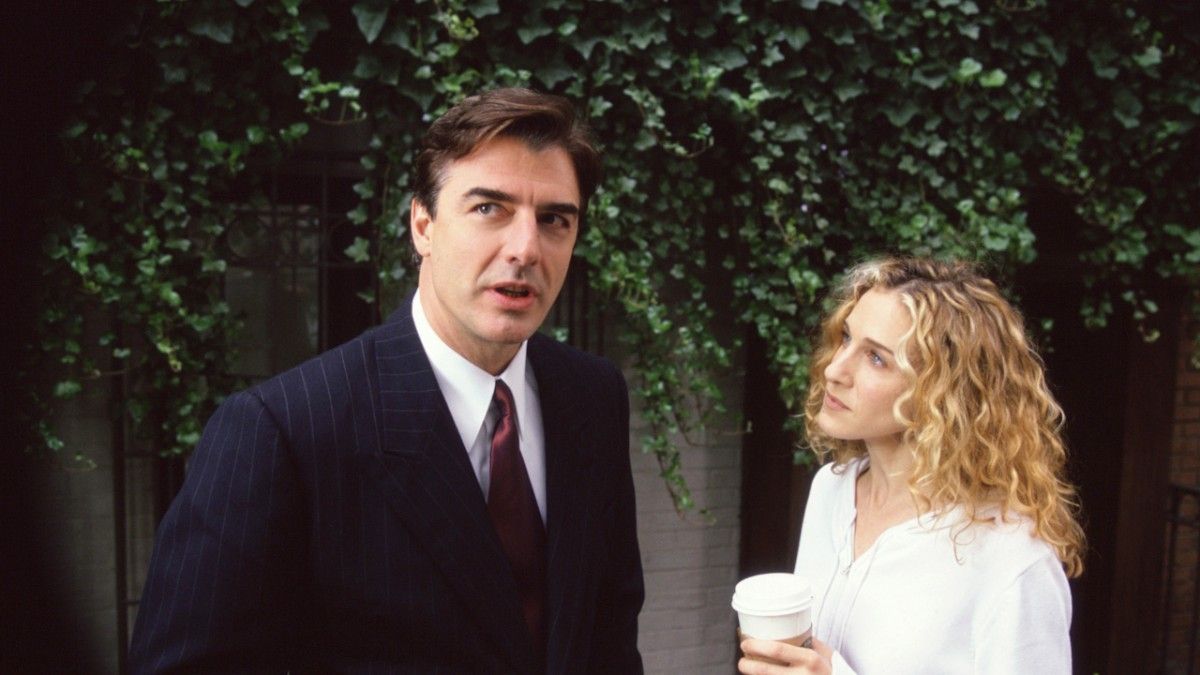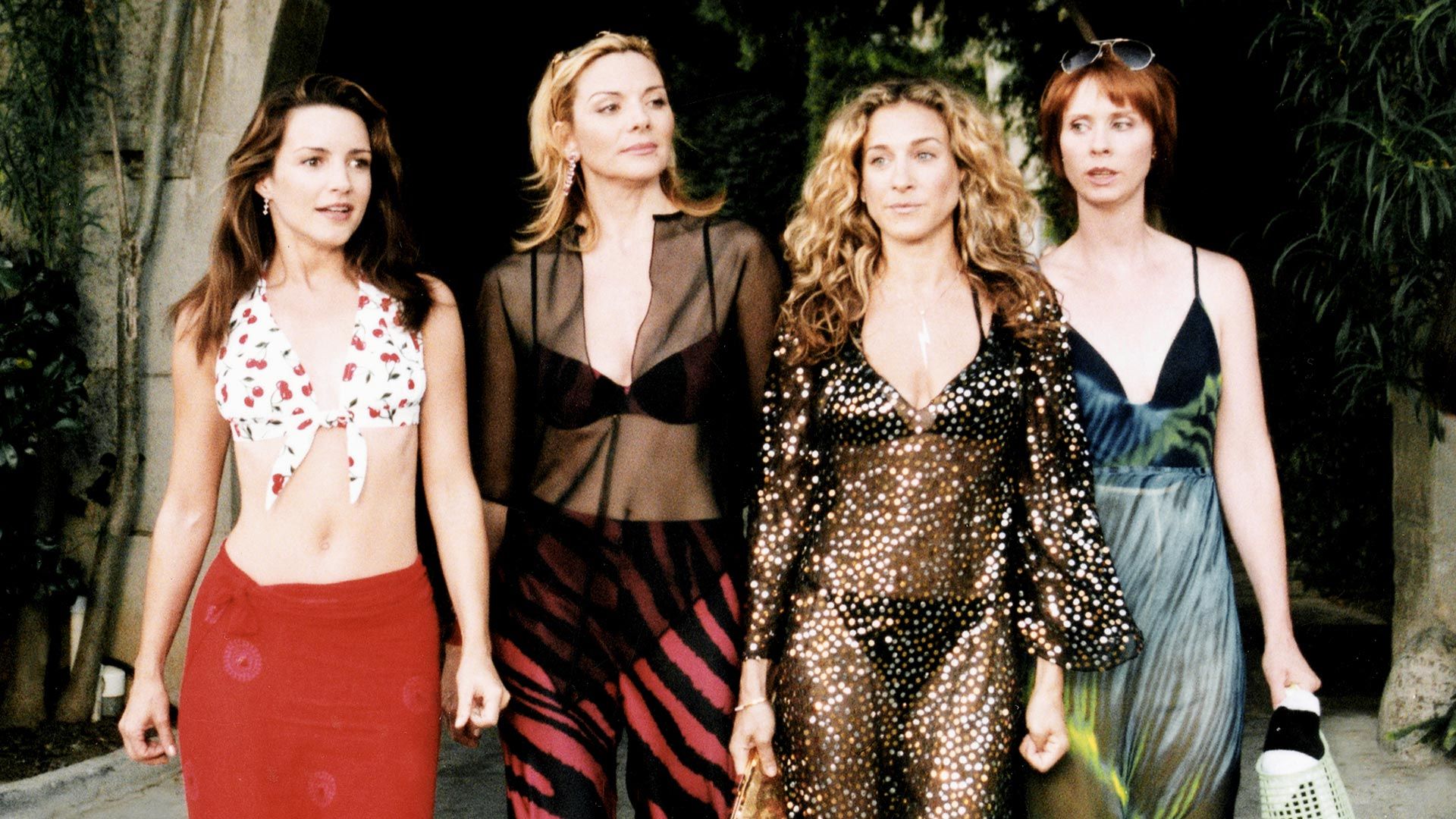Once upon a time, on a densely populated, urban American island known as Manhattan, there lived four single thirty-something women who, despite their differing careers and life goals, remain each other’s closest friends and confidantes, sharing their sexual misadventures with each other. Carrie (Sarah Jessica Parker) is a writer, Miranda (Cynthia Nixon) is a lawyer, Samantha (Kim Cattrall) is a public relations executive, and Charlotte (Kristin Davis) is an art dealer. Carrie narrates the series as she incorporates the sexcapades of her friends in a column for the fictional New York Star titled Sex and the City, which also happens to be what this ongoing television tale is called.
Yet beyond the intimacies of their respective sex lives, we know very few personal details about these women: and this is specifically by design. We’re not meant to know more than what the women share with each other about which men they’ve bedded recently. Sex and the City would not be Sex and the City if we focused for more than three minutes on the clients that Miranda represents or how the hell Carrie Bradshaw can afford a decent Manhattan apartment on the salary from a newspaper column alone which, even in 1998, feels like a stretch. In 2023, forget about it.
That’s because while the series was billed as what would ultimately become a groundbreaking, highly influential dramedy series that would come to encourage an entire generation of theatrically successful romantic comedy films, it was actually one of HBO’s most clever genre disguises. We like to think of Sex and the City as a lighthearted comedy, something not to take too seriously but just seriously enough that it became an icon of third-wave feminism. But its biggest credit was its ability to be the network’s most prominent fantasy, second only to perhaps Game of Thrones.
How Did 'Sex and the City' Go From Real-Life Column to Escapist Fiction?
Indeed, while the series is commonly seen as a strikingly real portrayal of how single women of a certain age talked about men at the dawn of the millennium, Sex and the City is ingrained with make-believe. This can’t be made any clearer than through the representation of Carrie Bradshaw, a character loosely based on the real-life column’s author, Candace Bushnell.
For years, Bushnell worked as a freelance writer, acquiring bylines in an array of well-respected publications like Vogue, Esquire, and Mademoiselle, but without ever earning a sustainable income. According to Jennifer Keishin Armstrong’s Sex and the City and Us, it was only when she was hired by The New York Observer to write a sex column for the paper did her career as a writer finally take off. It was this experience that would come to shape the character of Carrie in the series, with glitz, glamour, and narcissism sprinkled on top.
Because it’s not just Carrie’s professional success as a sex columnist that we’re supposed to respect, as the somewhat central protagonist of Sex and the City: we’re supposed to admire and respect her fabulousness. Like any good fantasy, we’re supposed to root for the hero (or antihero, in this case) because they possess all the magical qualities that we everyday, real-life people could never obtain.
Usually, this is referring to actual magical powers with wands and rings or whatever. But Carrie’s fabulousness refers to her New York lifestyle, defined by her elite connections and maxing out her credit card on designer gowns and shoes. References to credit cards being declined on some occasions are the only references to reality in this scenario, as we’re otherwise meant to believe this kind of lifestyle is obtainable for anyone if they work hard enough. Don’t be ridiculous, Andrea, everybody wants this.
Men Are Portrayed as Villains on 'Sex and the City'
What sells Sex and the City as a true blue fantasy beyond its escapist premise is the way in which it portrays men within its universe. Part of the series’ groundbreaking nature was the ways in which Carrie, Miranda, Samantha, and Charlotte objectify men in the same ways that men in patriarchal societies have been doing for centuries. Aside from perhaps Charlotte, who dreams of settling down and getting married, the women view men as meat to satisfy their hunger. Why would they want to commit to a heteronormative narrative that positions women as having an expiry date from being sexually attractive or viable? Luckily for them, in Sex and the City’s New York, they don’t have to.
For Carrie, our antihero meets her villain in the series pilot, and like so many pieces of fiction have historically done to women, we never know his real name until the series finale. For the vast majority of the series, Chris Noth’s recurring character is known only as Mr. Big. Carrie and Mr. Big’s on-again-off-again romance spans Sex and the City’s entire run, as he challenges Carrie’s view of men at every turn.
Mr. Big is both charming and hateable, a straightforward take on the notion that men are trash. But just like Harry Potter and Voldemort, Carrie can never escape Mr. Big until death do them part. Through every squabble and proclamation of love, Carrie feeds off the drama that Mr. Big provides in her life: without her villain, our antihero has no purpose. That’s why, in the original series, she could never properly commit to Aidan (John Corbett) as long as her feelings for Big were always driving her forward.
It sadly puts a damper on Sex and the City’s feminist tone when discussed in this context. But it ultimately contributes to the series’ fantastical legacy as well as the notion that flawless heterosexual dominion is in itself a fantasy, in which men and women essentially face off to the death in a competition for a life together. True love, at least in fantastical fiction like Sex and the City, means living for or in spite of your villain. To paraphrase Taylor Swift: it’s you, hi, you’re the problem, it’s you.
Let’s Go Live in Carrie Bradshaw’s New York for a Bit
To her credit, Bushnell explained in an interview with The New Yorker last year that, in the ‘90s, she was making $5,000 a month on one column, and she was writing multiple. She believes it’s because “people valued writing” back then: “[I]t wasn’t considered something everyone can do. Now, because of the computer, everyone has to do it, so we think everyone can do it.”
Nevertheless, this perspective doesn’t discount Sex and the City the television series from being steeped in a Manhattan portrayed as an escapist fantasy. It was influenced in part by the success of Seinfeld or Friends, in which young adults can supposedly afford decent apartments in the big city and have enough money left over to eat out several times a week. That very well may be some people’s everyday reality, but television obviously takes some creative liberties with its portrayal of (white) characters’ urban lifestyles. Because television is, after all, part of a capitalist cycle that produces the message that any and all of what your networks are selling is obtainable to you if only you work hard enough.
No wonder Millennials and Gen Z now romanticize this particular era of television in the late ‘90s and early 2000s, which had any number of sitcoms or dramedies set in New York City: including but not limited to Sex and the City, Seinfeld, Friends, Mad About You, Caroline in the City, Will & Grace, or Felicity. Generational divides and economic realities separate us from ever experiencing true-to-life versions of the premise of these series if they could ever exist, to begin with. But it’s nice to escape into fantasy when real life is hard enough.




